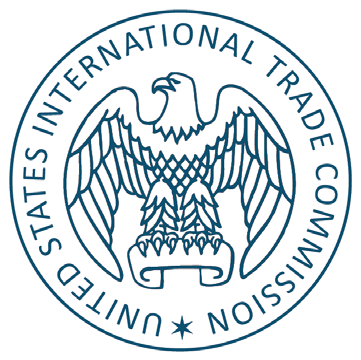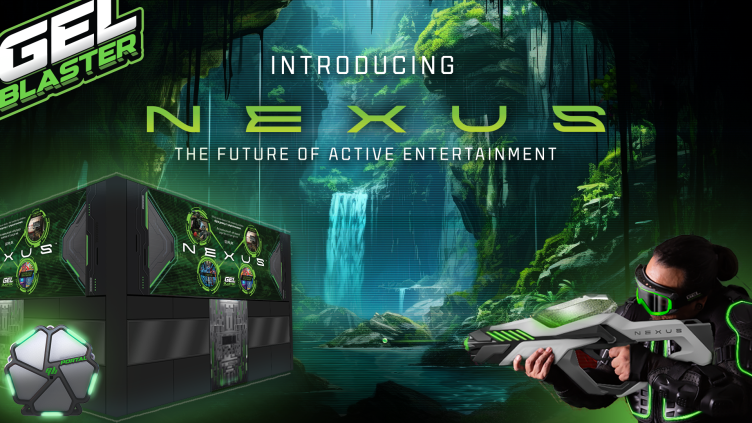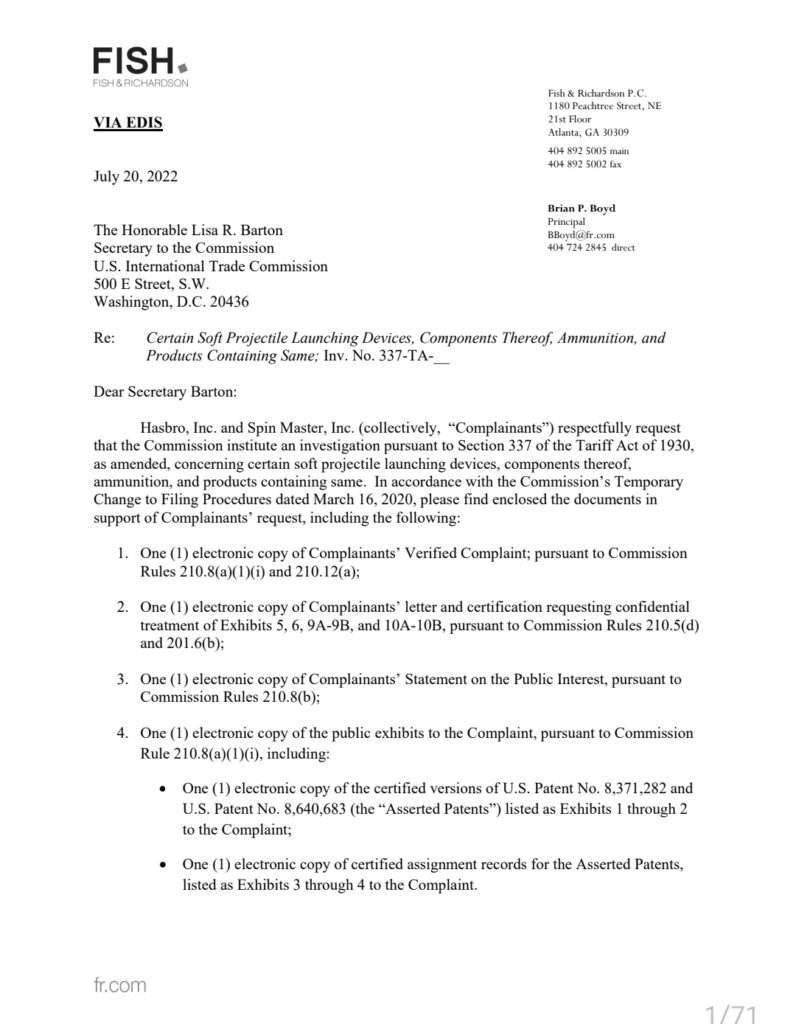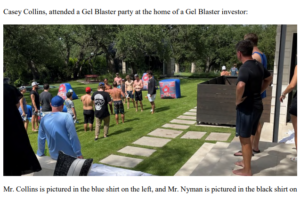
Gel Ball News: Hasbro “Owns” the Market Now? Part 1
November 15, 2023The gel ball market has been on a wild ride, between everyone joining the market (even Xshot joined the game this summer) and legal battles raging in the background (starting with Hasbro filing infringement complaints, and continuing with some settlements). Indeed, given the mass influx of products both on store shelves and online, it would seem that the market, at least for the time being, is going to grow dramatically, and there’s a lot of money at stake.
As of yesterday, documents became available online detailing the results of Hasbro’s infringement complaint, with them winning the case against Prime Time Toys, the only company to not settle beforehand. Between licensing settlements and the possibility of kicking a competitor out of the market, it would seem that Hasbro is set to make money on ALMOST everything – they can sell blasters, get royalties from other companies, and use this as precedent for going down the line of companies that have yet to be dealt with (I somehow doubt that X-shot went to Hasbro and got a license, for example). That’s not the whole story, however, because there are legitimate questions as to how Hasbro got into the market in the first place.
Are the patents valid? Did Hasbro steal IP from Gel Blaster in their rush to put blasters on shelves? Are we seeing the difference between what is legal, and what is ethical?
This is going to be a VERY long subject, filled with both information and some opinion sprinkled in, and context is a must. Take a few minutes, strap in, and hopefully I can make it all make sense over the next few posts.
How Often Do You Think of Smoot-Hawley?
 In 1930, the United States passed the Smoot-Hawley Tariff Act; the government sought to protect domestic jobs and markets when faced with the Great Depression. Whether the act helped is up for debate – after the US raised tariffs on thousands of foreign goods, other countries responded in kind, reducing international trade at a time when trade was desperately needed. However, we’re more interested in a particular section of that law.
In 1930, the United States passed the Smoot-Hawley Tariff Act; the government sought to protect domestic jobs and markets when faced with the Great Depression. Whether the act helped is up for debate – after the US raised tariffs on thousands of foreign goods, other countries responded in kind, reducing international trade at a time when trade was desperately needed. However, we’re more interested in a particular section of that law.
Section 337 of the Tariff Act provides a mechanism for investigating unfair competition in the marketplace, empowering the US International Trade Commission to determine if products imported by foreign companies are infringing on existing patents, copyrights, or other intellectual property (IP). There are uses beyond intellectual property, but that’s our current focus.
Between the original law and its various amendments over the years, the USITC has become an ideal way for companies to expedite their complaints and get results. Whereas lawsuits in the judicial system can take many years to be heard, and even longer for orders to be put in place, the USITC often finishes an investigation in 12-15 months. Additionally, it continues even if other relevant lawsuits are in the court system. Finally, the USITC has the authority to, at the conclusion of an investigation, sign exclusion orders to prevent product importation. It can also file cease-and-desist orders to prevent product from being sold, even if it made it to the US before the investigation is complete.
Perhaps the most recent case to reach the public consciousness is a ruling against Apple, saying that they violated patent rights and, in 60 days, could see a ban on Apple Watch importation until said IP is removed.
The Patents of Concern – And Some Personal Thoughts
Hasbro released the Nerf Pro Gelfire Mythic in late 2022, with other products in the line following (Legion, Ghost, etc). Prior to the release of the line, however, Hasbro filed a complaint with the USITC against several respondents. Specifically, Prime Time Toys, Splatrball, and Gel Blaster (along with their respective manufacturing and import partners) were targeted.
Within the complaint, Hasbro states that they’ve licensed two patents (8,371,282 and 8,640,683) from their current owners, Spin Master. These patents, originally filed for by The Maya Group (who made the Xploderz and Blaster Pro lines), claim the idea of firing superabsorbent polymer (SAP) ammo from a blaster. You can check my previous article for more info. Since Hasbro exclusively licensed the patent, they accordingly should be the only ones allowed to put gel ball blasters on the market, barring more licensing agreements, settlements, etc.
In my opinion, the patents are far too broad – they attempt to cover all possibilities that could ever happen, regardless of whether The Maya Group actually made them. For example, the “projection device” could be anything from a bow to a machine gun to a catapult, and the firing mechanism “may be based on any of the known ways of firing or launching projectiles or ammunition from a projection device”, as well as any combination. The patents specifically mention things ranging from springs and rubber bands to CO2 cartridges to the “system of levers or pulleys” used in compound bows.
Granted, the key points in a patent are the express claims made in the patent, while the detailed description seeks to elaborate on what those claims could look like (in the patent, the “Preferred Embodiments”). But the background of the patent (explaining why such an invention might be needed) and the description are just as necessary, so far as they express the intended use and creation of the invention.
Funny enough, the end of the description says:
Although the inventions have been described with reference to preferred embodiments and specific examples, it will readily be appreciated by those skilled in the art that many modifications and adaptations of the methods and devices described herein are possible without departure from the spirit and scope of the inventions as claimed hereinafter. Thus, it is to be clearly understood that this description is made only by way of example and not as a limitation on the scope of the inventions as claimed below.
Ultimately, the biggest claims are using SAPs as ammo, and having a launcher adapted to using them. But the patent reads like it wants to claim every variation imaginable.
Other Thoughts
There are several other issues I have. The “magazine” as illustrated is a hopper that ideally locks into place, but is described so broadly that any way of holding ammo (like a motor-driven or spring-loaded magazine) would be included. The relevant citations for loading air guns or paintball only involve hoppers, including the hopper design that Maya Group ended up using for everything. Certainly not the motorized magazines used in many gel ball or “gelsoft” launchers.
 There is the issue of what SAPs are being used. The patent gives a good description of SAP characteristics, as well as mentioning that they can be modified or tweaked for your various needs (Size upon hydration? Firmness? Etc.). And someone familiar with that area of chemistry could tweak the polymer as needed to achieve the basic principle of “stays together while firing, and bursts on impact”. Indeed, the authors take time to mention an ideal size range, shape, and other factors. But simply saying it has a “sufficient cross-linking density” is extremely open ended, especially when you consider how different the various possibilities are. Is there any reference for the strength needed to launch via that CO2 blast (or any compressed gas blast) at a given pressure? In fact, since air pressure (via gas or a spring-based plunger system) is its own category in the detailed explanation, separate from just a spring or rubber band…how strong do the SAPs have to be to withstand the various launch methods those can do, both directly and indirectly? Additionally, are we talking about ALL super absorbent polymers, or specific classes of them? You’d think the patent would specify at least what kind or kinds you’re using, since it could range from sodium polyacrylate to corn starch to gelatin. Yes, patents should make sense and be replicable to people of skill in the art (POSITA), but it feels like they expect a person reading this to be a complete encyclopedia of knowledge in that field. Instead, a POSITA should be able to look at a patent and reproduce the product from that, given both knowledge of the field and associated tools of that field (be that a chemistry lab setup, a compiler for a programming language, or even a semiconductor fabrication plant (POSITA does tend to be more like “Company of Skill in The Art” at that level).
There is the issue of what SAPs are being used. The patent gives a good description of SAP characteristics, as well as mentioning that they can be modified or tweaked for your various needs (Size upon hydration? Firmness? Etc.). And someone familiar with that area of chemistry could tweak the polymer as needed to achieve the basic principle of “stays together while firing, and bursts on impact”. Indeed, the authors take time to mention an ideal size range, shape, and other factors. But simply saying it has a “sufficient cross-linking density” is extremely open ended, especially when you consider how different the various possibilities are. Is there any reference for the strength needed to launch via that CO2 blast (or any compressed gas blast) at a given pressure? In fact, since air pressure (via gas or a spring-based plunger system) is its own category in the detailed explanation, separate from just a spring or rubber band…how strong do the SAPs have to be to withstand the various launch methods those can do, both directly and indirectly? Additionally, are we talking about ALL super absorbent polymers, or specific classes of them? You’d think the patent would specify at least what kind or kinds you’re using, since it could range from sodium polyacrylate to corn starch to gelatin. Yes, patents should make sense and be replicable to people of skill in the art (POSITA), but it feels like they expect a person reading this to be a complete encyclopedia of knowledge in that field. Instead, a POSITA should be able to look at a patent and reproduce the product from that, given both knowledge of the field and associated tools of that field (be that a chemistry lab setup, a compiler for a programming language, or even a semiconductor fabrication plant (POSITA does tend to be more like “Company of Skill in The Art” at that level).
I get the aim for broad patents; it keeps people from designing around them and competing with you. But the whole point of the patent system is disclosing that replicable method in exchange for being the only one legally allowed to use it. And with the possible exception of the projectile carrier, none of this seems…unique.
FURTHERMORE…
 There’s a HUGE difference between what the patent says it covers, and what The Maya Group actually did. The Xploderz blasters, functionally, all worked the same…and were rather rudimentary. There was a giant plunger and tube, a spring powering it, and in most cases the plunger was a large hollow plastic piece you pull and release to fire, not unlike the Nerf Bow n Arrow of old. The air outlet of the plunger tube wrapped backwards through the blaster to get behind the hopper mechanism and barrel. Depending on the generation, you had either a single shot blaster, using a carrier within the barrel to hold the gel ball as it accelerated, or a blaster that just used a gel ball fired through the barrel, but with an extra mechanism for holding the hopper door open to allow more than one round to fall through and get fired. At the very least, that carrier in the original blasters was novel, and in the description it is expressly noted that a key purpose is “preventing contact between the soft-projectile 16 and the barrel 15 during launch”. Contact with the barrel in airsoft or gelsoft, meanwhile, is critical.
There’s a HUGE difference between what the patent says it covers, and what The Maya Group actually did. The Xploderz blasters, functionally, all worked the same…and were rather rudimentary. There was a giant plunger and tube, a spring powering it, and in most cases the plunger was a large hollow plastic piece you pull and release to fire, not unlike the Nerf Bow n Arrow of old. The air outlet of the plunger tube wrapped backwards through the blaster to get behind the hopper mechanism and barrel. Depending on the generation, you had either a single shot blaster, using a carrier within the barrel to hold the gel ball as it accelerated, or a blaster that just used a gel ball fired through the barrel, but with an extra mechanism for holding the hopper door open to allow more than one round to fall through and get fired. At the very least, that carrier in the original blasters was novel, and in the description it is expressly noted that a key purpose is “preventing contact between the soft-projectile 16 and the barrel 15 during launch”. Contact with the barrel in airsoft or gelsoft, meanwhile, is critical.
Late in the game, Maya did release the Blaster Pro line, with more mature internal setups, but using the same type of ammo. And there was an electric blaster, the E5000. If memory serves right, though, it was more akin to a Nerf Stampede sort of mechanism (it’s been a long time since I handled one, and I somehow can’t find internal pictures online, so please send pics and correct me!). It sits in a weird spot, because in terms of function, features (it had select fire), and ammo type being fired from a blaster, it’s the most logical thing you can point to for defending this patent. At the same time, though, this was at the tail end of the line’s existence, when the line left store shelves, and I can’t actually recall seeing the Blaster Pro line being sold in mass numbers anywhere. I only came across the E5000 I used to own by accident in a thrift store. As far as patent arguments go, once all factors are taken into account, you could feasibly argue that the “gelsoft” route (gel balls fired by airsoft-type mechanisms) is sufficiently different to not be covered by the patents.
Crucially, though, it would seem that no one ever tried to make these arguments or challenge the patent, instead assuming that they could defend their products against it if needed. That would turn out to be a bad decision.
Gel Blaster Fights Back in Texas
Gel Blaster was unique among the respondents; they were not only the first to market this next generation of gel ball blasters in the US, but they had been in talks with Hasbro about releasing a Nerf/Gel Blaster collaboration! There were serious ongoing talks, business meetings, Hasbro executives present at Gel Blaster company functions, and a signed confidentiality agreement. And Hasbro reportedly had access to nearly everything Gel Blaster had, from CAD files to legal strategies. Gel Blaster filed a complaint in US District Court, detailing the situation. Admittedly, the filing is clearly presenting the best narrative possible for Gel Blaster’s side. Even so, the fact that there are photographs, partnership documents, and emails detailing the saga would tend to paint Hasbro in a bad light.
If you want to look at the documents in the case, Court Listener has a database showing millions of documents, including from this case...but not all of them can be downloaded for free. At least, not yet. Since federal court filings are generally maintained on PACER, and the courts can charge a per page fee for file access/download, it does present an obstacle for people on budgets. Luckily, Court Listener has browser extensions available that, when you go on PACER and access documents, it legally saves a PDF copy to an archive for other people to be able to find, free of charge. I *might* have downloaded said extension while researching all of this.
Relevant Texas Court Documents
- Transcript of Motions Hearing, 01-24-2023
- Gel Blaster’s Post Hearing Outline (Summarizing their points arguing for a preliminary injunction against Hasbro)
- Hasbro’s Post Hearing Brief Opposing an Injunction
 Admittedly, it takes TIME to pour over 200+ pages of transcript, along with the briefs that came after. But this hearing about a potential preliminary injunction is what we have to look at.
Admittedly, it takes TIME to pour over 200+ pages of transcript, along with the briefs that came after. But this hearing about a potential preliminary injunction is what we have to look at.
Gel Blaster argues that Hasbro, in their time with Gel Blaster (before parting ways), would have seen the plunger arm and switch setup Gel Blaster was planning for future blasters. They hadn’t done so yet due to ambitions related to an upcoming project , which require systems that accurately track the number of shots, leaving processor power for the game system itself. The Surge, Surge XL, and others rely on program timing to estimate how long to power the motor for semi-auto mode, and since the complete game environment had yet to enter the market, it was cheaper to use timing instead for blaster operation.
Hasbro, meanwhile, says they essentially looked at the Anstoy AKM47 as inspiration, have some things arranged differently internally, and came across the plunger arm/switch solution naturally in development. Hasbro also counters with examples of blasters that use switches for regulation, from Splatrball SRB400s to the Nstrike Stampede to the Modulus Regulator, trying to illustrate that as far as consumers are concerned, it’s all the same to them as long as functionality is there, and that Gel Blaster’s solution was nothing special. They even submitted a Nerfhaven mod and a Captain Xavier Stampede Mod Video (I think it’s this one) as exhibits!
Defending patents was also a point of testimony. At one point, when the matter of the Spin Master patents was raised, Hasbro and Gel Blaster signed a Common Interest Agreement, signaling their intention to mutually defend against any potential IP lawsuits, as well as their belief that they had a solid defense against any such suits. On their part, Hasbro does not deny the existence of the various agreements. They did, however, suggest that patents were the overriding concern as the process went on, while Gel Blaster countered by saying Hasbro brought it up immediately when executives came to begin real partnership negotiations, and gave the impression that the matter was settled, without mentioning anything to the contrary. Gel Blaster also alleged that Hasbro, after entering the partnership and seeing Gel Blaster’s defense strategy, was using that knowledge to attack them from a different angle.
In any case, the partnership parted ways after Hasbro changed their offer and Gel Blaster refused the terms. Soon after, Hasbro licensed the Spin Master patents, and the legal drama began.
(LOTS OF OPINION FOLLOWS)
 As a hobbyist, it feels like many of the Hasbro examples were red herrings, seeing as the blasters with extra switches were different in functionality (Stampede and Turbine have them for purely electric cycle control), while the Regulator is using an IR sensor system to count darts being fired. The Splatrball SRB400 that was brought up does it purely by mechanical means, as opposed to sending a signal to a control board. Modified Stampedes (using Arduinos) and associated videos are better examples, except for the fact that one of the designers admitted these weren’t examples of inspiration from actual Mythic development and research – just things found in preparation for the hearing.
As a hobbyist, it feels like many of the Hasbro examples were red herrings, seeing as the blasters with extra switches were different in functionality (Stampede and Turbine have them for purely electric cycle control), while the Regulator is using an IR sensor system to count darts being fired. The Splatrball SRB400 that was brought up does it purely by mechanical means, as opposed to sending a signal to a control board. Modified Stampedes (using Arduinos) and associated videos are better examples, except for the fact that one of the designers admitted these weren’t examples of inspiration from actual Mythic development and research – just things found in preparation for the hearing.
Meanwhile, Hasbro tried to illustrate how the Surge’s gearbox assembly was similar to other things on the market, while the Mythic’s system was different due to…motor placement and gearbox shape? I’m sorry, but that feels like a student arguing they didn’t plagiarize because they used a thesaurus to change some of the words.
Ultimately, all we really have is the preliminary injunction hearing to go off of, so it’s entirely possible Hasbro did, in fact, come up with some things themselves, and that they simply changed their minds about the viability of defending against the Spin Master patents. We might never know, it turns out, as Gel Blaster and Hasbro reached a settlement soon after, prior to any sort of discovery. Incidentally, it was also just prior to the USITC investigation holding a hearing on the patent issue, which was going far faster than in the court system. So even if Gel Blaster had a case, time was not on their side.
Stay tuned for Part 2!





